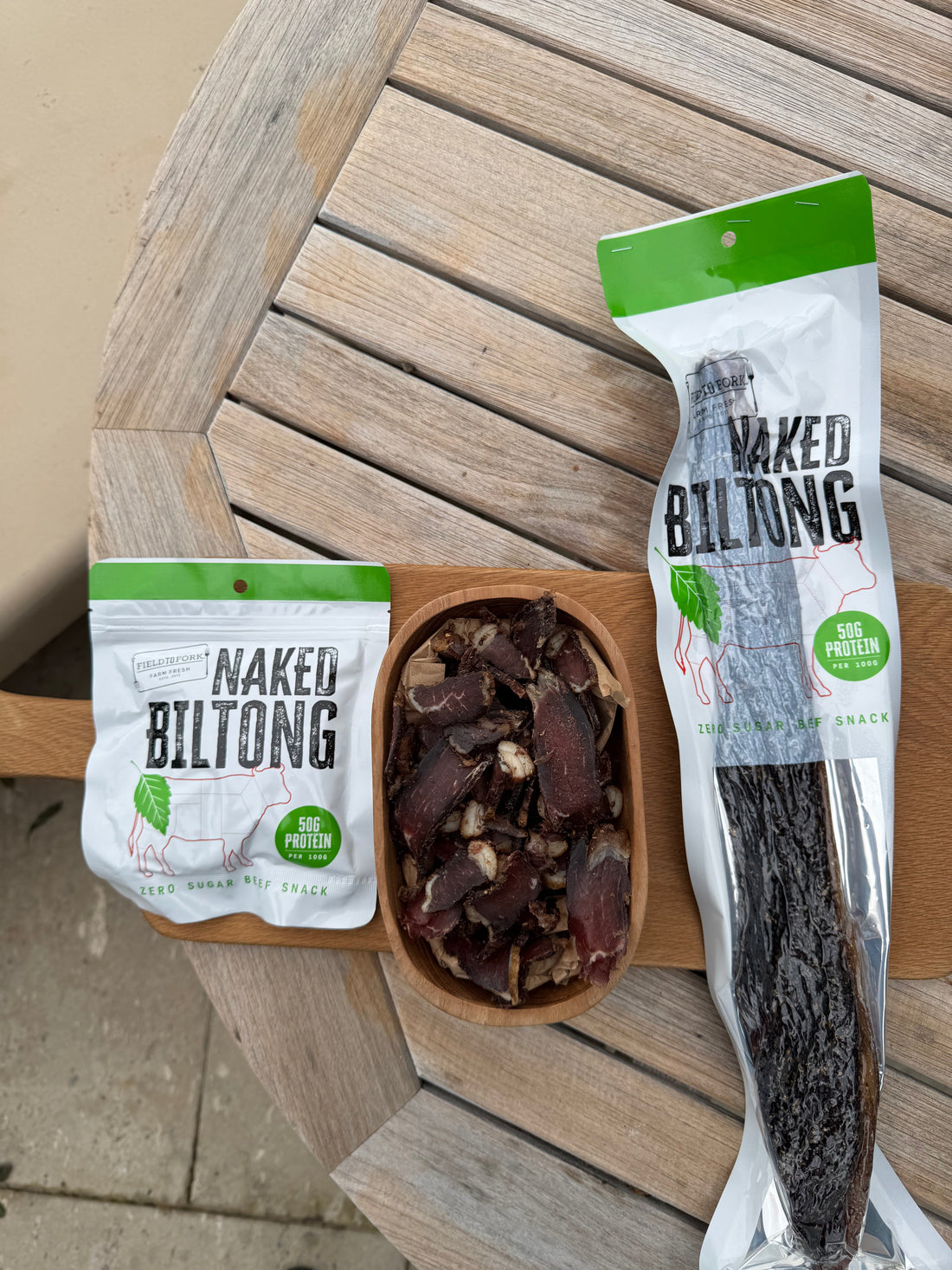
Biltong vs Jerky: The Key Difference in Taste, Texture, and Nutrition
If you're trying to eat healthier, fuel your body with clean protein, or just find a better meaty snack, chances are you've come across biltong and beef jerky. At first glance, they seem similar — both are dried red meat snacks, high in protein, and made for convenience. But the key difference between biltong and jerky lies in how they’re made, what they taste like, and how they treat your body.
What Is Biltong?
Biltong is a traditional South African snack made by air-drying lean cuts of beef or biltong meat over 7 to 10 days. Unlike jerky, it’s not cooked. Instead, the meat is soaked in vinegar, salt, and a simple blend of spices like coriander, then left to dry naturally in cool, circulating air.
This slow process helps the biltong develop a soft texture, a bold and beefy taste, and a clean flavor profile that reflects the meat itself — not just seasoning. It’s a snack enjoyed by South Africans from childhood, and now, it’s growing in popularity in Australia and beyond.
What Is Beef Jerky?
Jerky, on the other hand, is rooted in North American and Native American preservation methods. It’s made by slicing meat into thin strips, soaking it in sweet and salty marinades — often with soy sauce, worcestershire sauce, and other sugary sauces — then drying it at high heat.
This method essentially cooks the meat, giving it a chewy, tough texture and a flavour that depends heavily on the marinade. While widely available, jerky often includes preservatives, artificial flavouring, and added sugar — making it a less natural choice compared to biltong.
Is Biltong Healthier?
If you're asking, is biltong healthier than jerky? — the short answer is yes. Biltong is usually:
- Lower in sugar and carbohydrates
- Higher in protein
- Free from artificial ingredients
- Rich in healthy fat content
- Naturally preserved through drying, not chemicals
And perhaps the most telling sign? When you try to make “healthy jerky” by removing all the bad stuff, what you end up with is something that basically looks and tastes like traditional biltong.
Why More People Are Choosing Biltong
Whether you're into fitness, clean eating, or just tired of processed snacks, biltong fits the bill. It’s ideal for:
- People on keto, carnivore, or paleo diets
- Anyone looking for a clean protein snack
- Those who want a snack with unique flavors and satisfying texture
- Parents wanting healthy snacks for their kids
- Adventurers, gym-goers, and busy professionals needing fuel without the crash
And unlike jerky, you’re not stuck chewing on dried-out minced meat or wondering if what you’re eating is real lean meat or just filler.
Why We Chose Biltong
Some of our team grew up in South Africa, where biltong originates. It wasn’t just a snack — it was part of daily life. When we moved to Australia, we couldn’t find anything close. Jerky was everywhere, but healthy jerky? Not so much.
That’s why we built Naked Biltong — to bring real, nutrient-dense biltong to Australians. Our recipe stays true to its roots: just beef, vinegar, salt, and spice. No sugars, no nasties, no junk. Just the best possible version of biltong we could make.
Taste the Real Difference
Your taste buds know the difference. Biltong has a natural, satisfying depth — while jerky often feels like a heavily seasoned compromise. With biltong, the flavour comes from the meat and spice, not sugary glazes or artificial smoke.
So if you’re choosing between jerky or biltong, the answer depends on what you want: processed or pure. Long shelf life or long-lasting flavour. A quick filler, or something that truly nourishes.
Try biltong today — and experience the snack that’s stood the test of time, naturally.





